Collection of Chinese armored vehicles at the Military Museum of the Chinese Revolution
After the victory of the Chinese Communists over the Kuomintang, the Soviet Union rendered large-scale assistance to the People’s Republic of China in strengthening its defense capability. Several thousand military advisers and civilian technical experts were sent from the USSR to support the construction of the armed forces in the PRC. Simultaneously with the transfer of Soviet-made equipment and weapons, enterprises were built in China to produce defense products, and personnel were trained.
Until the end of the 1950s, China received a large number of various armored vehicles from the USSR. At first it was average Tanks T-34-85, self-propelled artillery systems SU-76M and SU-100. In smaller quantities, heavy tanks IS-2, as well as self-propelled guns ISU-122 and ISU-152 were delivered. Prior to the aggravation of Soviet-Chinese relations in the early 1960s and the cessation of military-technical cooperation, amphibious tanks PT-76, medium tanks T-54, armored personnel carriers BTR-40 and BTR-152 were also transferred to the PRC.
The first baptism of fire of Chinese tankers on the T-34-85 in Korea took place at the end of 1950. During the Korean War, the Chinese deployed more than 300 T-34-85 and IS-2 tanks. The exposition of the Military Museum of the Chinese Revolution in Beijing has two T-34-85 tanks. One of them with tail number “215” was awarded the title “Tank Hero”.
According to the official Chinese version, this tank in July 1953 during a counterattack in the Shiksyandong area came out the winner in the battle with three American M46 Patton heavy tanks. Trying to climb the hill before this, the thirty-four got stuck in a deep pit with mud. After two other Chinese tanks, falling under artillery fire, retreated, the enemy considered the T-34-85 No. 215 damaged. However, the crew under the command of Jan Aru did not leave the tank and at night disguised it under a small hill, smearing it with mud and covering it with branches. The tankers were in the tank without food for two days, until three American Patton appeared on the hill.
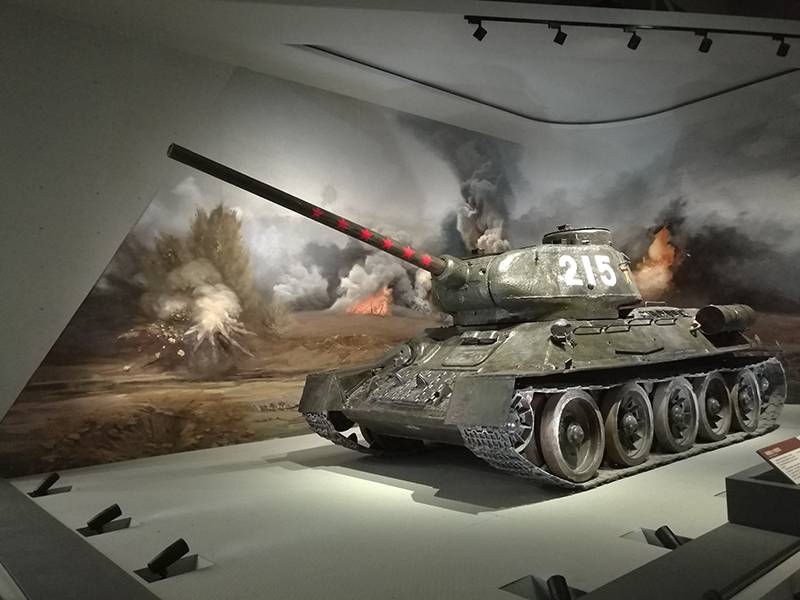
Photo: Said Amirov, saidpvo.lj.com
"Tank Hero" T-34-85 with tail number "215"
After waiting for the enemy M46 to turn on board, the commander Jan Aru ordered to open fire. In a short period of time, two American tanks were set on fire, and the third lost its course. With the help of infantrymen, who delivered about 70 logs at night, the tank was rescued from a mud trap. Thirty-four went on the attack. Together with the infantry, tankers captured Beishan Mountain, destroying 2 enemy tanks, 12 dugouts, 3 machine gun nests and 3 recoilless guns. During the war on the Korean Peninsula, this tank supported infantry attacks seven times. He knocked out and destroyed: 5 tanks, a caterpillar transporter, 26 dugouts and machine gun nests, 9 mortars, a tunnel and a command post.
In the second half of the 1950s, the USSR delivered dozens of T-54 medium tanks to the PRC. Almost simultaneously with the start of operation of these machines, the Chinese leadership acquired a license to manufacture them. In 1957, the first batch of tanks was assembled from Soviet components at plant No. 617 in Baotou. In the early 1960s, China managed to completely localize the production of the T-54. The Chinese version differed from the original sample in a number of details, which was due to the limited capabilities of Chinese industry. A number of sources claim that the Chinese counterpart T-54, which received the designation Type 59 at first, had armor of the worst quality. The Type 59 early release was not equipped with night vision devices, a ballistic computer, and an arms stabilizer. In terms of mobility, Type 59 corresponded to the T-54, but the reliability of the Chinese tank was worse.
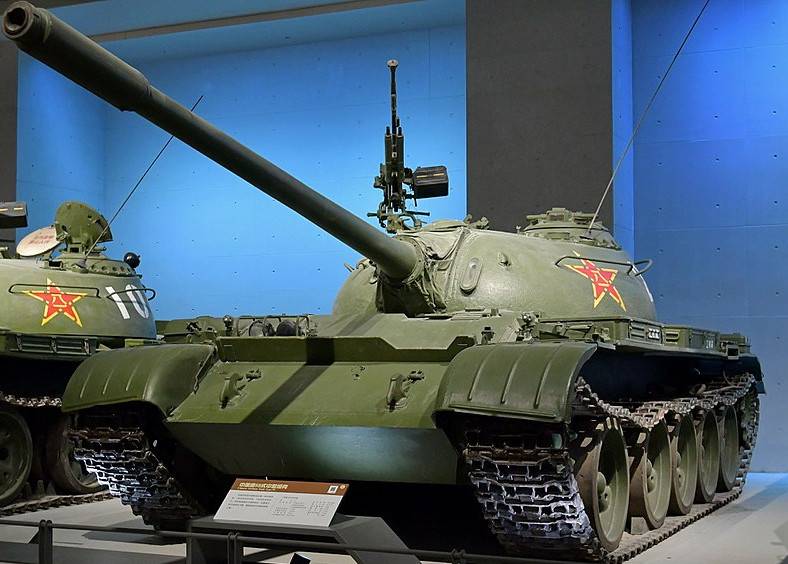
Type 59 Medium Tank
Subsequently, improved options went into the series, and Type 59 for a long time became the basis of the PLA armored forces. The serial production of Type 59 tanks lasted 30 years. During this time, it was possible to build over 10 combat vehicles of various modifications. The museum collection has three tanks of the Type 000 family, which differ in the year of manufacture and equipment.
Since 1961, Type 59-I tanks went into the series. This version differed from the original model with an updated 100 mm gun, night vision devices and a ballistic computer with manual data entry.
From 1982 to 1985, Type 59-II tanks were produced. The main difference from the previous tanks of this family was the 105-mm Type 81 rifled gun, which was a copy of the English L7 gun. A laser rangefinder appeared above the gun, and smoke grenade launchers appeared on the sides of the tower. Apparently, these innovations were copied after meeting Western armored vehicles in Egypt and the beginning of military-technical cooperation with the United States and Great Britain in the early 1980s. On some of the tanks, the Type 54 anti-aircraft machine gun (a copy of the DShKM) was replaced with a 12,7 mm Type 85 machine gun created in China. On the basis of the Type 59-II modification, the Type 59-IIA tank was created, the design of which limited use of combined multilayer armor and dynamic protection.
The Type 59 tanks in China are now obsolete and put into reserve. Nevertheless, vehicles exported are still in use in the armies of several states. In some countries, they have undergone modernization by Chinese or Western companies.
The first tank of their own design in China is considered Type 62. This machine resembles a smaller Soviet T-54, and at the same time is armed with an 85-mm cannon and has bulletproof frontal armor of the hull. The 7,62 mm Type 59T machine gun (a copy of the SGMT) was paired with the gun, the 12,7 mm Type 54 anti-aircraft machine gun was mounted on the turret. The mass of the Type 62 tank in the combat position was 20,5 tons. The thickness of the front and side armor of the hull was 25 mm, the forehead of the tower is 50 mm, the side of the tower is 40 mm. 430 hp diesel engine provided highway speeds of up to 70 km / h.
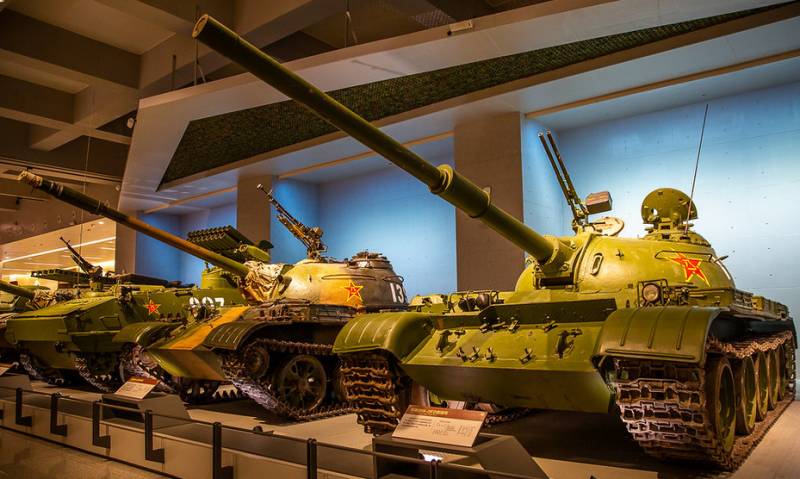
Photo: Said Amirov, saidpvo.lj.com
The rightmost Type 69 medium tank, the second on the right is the Type 62-I light tank. The size difference with medium tanks is clearly visible
The main purpose of the Type 62 tank was reconnaissance. It was also (based on the experience of fighting in Korea) supposed to use it in the mountains. The lack of protection of the light tank was to be compensated by high mobility. Type 62 tanks performed well at the final stage of the Vietnam War, their penetration through soft soils and the jungle was significantly higher than that of the Soviet T-54 and their Chinese clones.
In 1979, the Type 62-I modification with a laser rangefinder went into the series. Overhead armor and a bulwark were installed on part of the tanks, which improved protection against cumulative grenades. The production of Type 62 light tanks continued until 1989, with a total of about 1200 vehicles built. Currently, the Type 62 previously in service with the PLA is mostly transferred to storage or decommissioned.
The last Soviet serial light amphibious tank was the PT-76, the production of this machine was completed in 1967. However, the PRC went further and created a Type 76 amphibious tank on the basis of the PT-1958 in 63, installing a turret with an 85-mm cannon with which a 7,62-mm machine gun was paired. An anti-aircraft 12,7-mm machine gun is mounted on the tower in front of the loader’s hatch, from which it is also possible to fire at ground targets. The tank had bulletproof protection, the thickness of the body armor was 11-14 mm. Unlike the PT-76, a radio operator was introduced into the crew, and its number reached 4 people.
During the trial operation of the Type 63 tank, it turned out that the V-6 diesel engine rated at 240 hp does not provide the required level of mobility of the 18,7-ton machine. Therefore, on an advanced modification of Type 63-I in 1964, a 400-horsepower diesel engine was installed. At the same time, the main weight and size and combat characteristics of the Type 63-I tank remained the same as its small-scale prototype. A floating tank develops maximum speed when driving along the highway 64 km / h, afloat - up to 12 km / h.
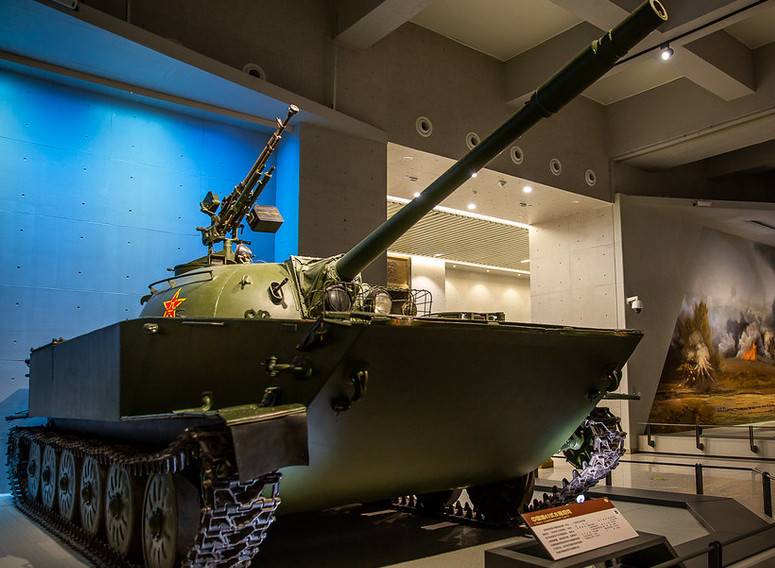
In the mid-1970s, Chinese amphibious tanks underwent modernization, the purpose of which was to increase combat effectiveness by installing a fire control system. The Type 63-II tank was equipped with a laser rangefinder with a range of 300 to 3000 meters, a ballistic computer, night vision devices and new radio equipment. The next modification of the floating tank was the Type 63A model, which is armed with a 105-mm rifled low-pulse gun. Subsequently, on Type 63-II and Type 63A tanks, the obsolete anti-aircraft 12,7 mm Type 54 machine gun was replaced with a Type 85 machine gun, which uses the same ammunition. It is reported that to increase security, additional cermet armor and side screens can be used. But at the same time, the tank loses buoyancy and the level of its mobility decreases. In this regard, the engine with a capacity of 600 hp and additional plastic floats that are mounted along the side are used on parts of late-release machines.
Type 63 family amphibious tanks are in service with the PLA Ground Forces and Marine Corps, where they are used to conduct reconnaissance, escort convoys and support troops during landing on the coast. In the past, Type 63 tanks took part in the war in Southeast Asia and in a number of local conflicts.
Among the Chinese tanks in the museum’s exposition, a 130-mm Type 70 multiple launch rocket system (WZ-302) was installed on the Type 63A tracked armored personnel carrier chassis (YW531). In the frontal projection, the thickness of the armor is 11 mm, the side - 6 mm. 260 hp diesel engine provides speed on the highway up to 60 km / h, afloat - 6 km / h. MLRS on a caterpillar chassis were supposed to provide fire support to tank regiments and have mobility no worse than medium tanks Type 59. MLRS Type 70 was adopted in the early 1970s.
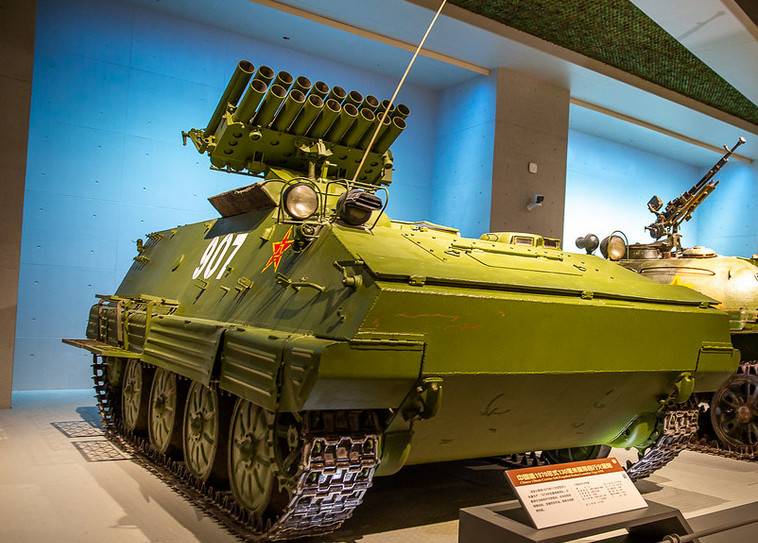
MLRS Type 70
Inside the case, the transportation of additional ammunition is provided. Launchers are arranged in two rows: in the top row, 10 tubes, in the bottom row 9. The firing is carried out by 130-mm unguided turbojet shells stabilized in flight by rotation around the longitudinal axis. Although the firing range is 10 km, it was understood that the MLRS will mainly fire at visually observable targets. An early-modified 130-mm projectile has a length of just over 1 m and was equipped with a high-explosive fragmentation warhead. In the mid-1980s, shells with a fragmentation warhead containing 2600 steel balls and incendiary shells appeared. Projectile weight 32 kg, warhead mass - 3 kg. Recently, the launch of a rocket with a range of up to 15 km increased. This shell has an increased fragmentation effect.
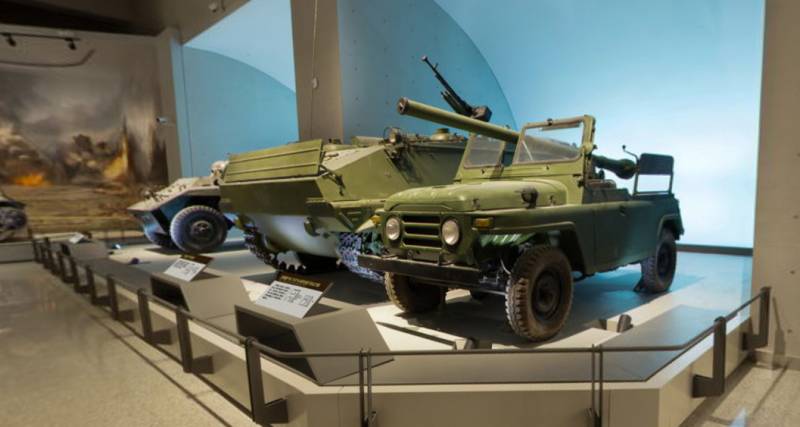
A Type 63A tracked armored personnel carrier next to a BJ212A light off-road vehicle with a 105mm recoilless gun mounted
Mass production of the Type 63A amphibious armored personnel carrier began in the second half of the 1960s. The mass of the vehicle in the combat position is 12,6 tons. The crew is 3 people, 11 motorized rifles could be accommodated in the airborne squad. Armament - 12,7 mm machine gun.
Although there are no modern Chinese tanks in the permanent exhibition of the Military Museum of the Chinese Revolution in Beijing, temporary exhibitions were regularly held in the past adjacent to the main building in the past. At the exhibition of armaments and military equipment dedicated to the 90th anniversary of the People's Liberation Army of China, a number of modern models were presented. Before entering the museum, 23 samples were placed in service with the PLA. The exhibition was attended by senior leaders of the PRC, including President Xi Jinping.
The Type 99 main battle tank presented at the exhibition is a combination of Russian and Western technologies and conceptually resembles the Soviet T-72. The Chinese tank is armed with a 125 mm ZPT-98 cannon with an automatic loader (unlicensed version 2A46 with an extended barrel), paired with a 7,62 mm Type 66 machine gun and 12,7 mm Type 89 anti-aircraft gun (QJZ89). Thanks to the use of an automatic loader, the tank crew has been reduced to 3 people. According to the Chinese media, Type 99 tanks are equipped with laser-guided ATGMs fired from a tank gun. The fire control system uses components copied from Western tanks and includes a gunner’s sight with an integrated laser rangefinder and a thermal imaging channel, a panoramic combined commander’s sight, weapon stabilizer, a digital ballistic computer and a set of sensors.
The armor of the Type 99 tank is in many ways similar to the armor of the Soviet T-72 and T-80 tanks. The protection of the frontal projection of the tanks of the latest series is enhanced by the installation of DZ blocks placed on top of the main reservation, and the blocks are located in the “corner” on the tower. In addition, the sides of the tower are further protected, where the dynamic protection is mounted on top of the trellised basket. Laser-guided anti-tank guided missile defense is provided by a counteraction complex consisting of a radiation-detection sensor, a quantum generator, and an automatic control system.
High mobility of a tank with a combat weight of more than 50 tons is ensured by a 1200 hp turbo-charged water-cooled diesel engine, which was created based on the German WD396. The engine is blocked with a transmission in a single power unit and can be replaced in the field in 30-40 minutes. The maximum speed on the highway is 65 km / h, the range with external fuel tanks is up to 700 km. The PLA currently operates more than 800 Type 99 tanks.
Together with the Type 99 tank, the Type 04A infantry fighting vehicle (ZBD-04A) was presented at the exhibition, which uses an armament complex similar to that installed on the Russian BMP-3. According to information published in open sources, in 1997 full-scale samples and documentation for the Russian fire control system and BMP-3 armament with a 100-mm cannon paired with a 30-mm 2A72 automatic cannon and a missile control channel launched through the channel were transferred to China. the trunk. In addition to this, the Chinese BMP is equipped with one 7,62 mm coaxial machine gun located to the left of the gun, and two 7,62 mm machine guns in the front of the case. Three smoke grenade launchers are mounted on each side in front of the tower.
The tower is made of armored steel, and the body is made of aluminum. The tower and the hull provide the crew with protection against bullets and fragments. On the exhibition model, the hull and tower in the frontal projection have reinforced armor, which makes it possible to withstand small-caliber shells. A machine with a combat weight of about 25 tons is floating and, in addition to 3 crew members, holds 7 paratroopers. The speed on a paved road is up to 65 km / h, afloat - 6 km / h. The exact number of Type 04A BMPs built in the PRC is not known, but in the West they are considered to be at least 200 units.
To provide fire support, reconnaissance and combat against tanks, the “wheeled tank” PTZ-09 is designed based on the wheeled infantry fighting vehicle ZBL-09 (ST-1). In the basic configuration, the frontal armor of the vehicle provides protection against 12,7 mm armor-piercing bullets, on-board from 7,62 mm bullets. When using a set of mounted armor, the forehead is protected from 14,5 mm bullets and 25-30 mm shells fired from a distance of 700 m.
The main armament of the machine is a 105 mm rifled gun, with which a 7,62 mm machine gun is paired. As an anti-aircraft machine gun used weapon 12,7 mm caliber. A tank destroyer with an 8x8 wheel formula in the combat position weighs 22,5 tons and is equipped with a 440 liter diesel engine. from. The maximum speed on the highway is 90 km / h.
The exhibition also features a 155-mm Type 05 self-propelled howitzer (PLZ-52) and a Type 09 self-propelled artillery mount.
The development of the Type 05 self-propelled artillery mount has been underway since the mid-1990s. Testing of the first prototype began in 2003. The Chinese 155-mm self-propelled gun is similar to many modern foreign self-propelled howitzers, but representatives of the PRC claim that Type 05 is a completely Chinese development.
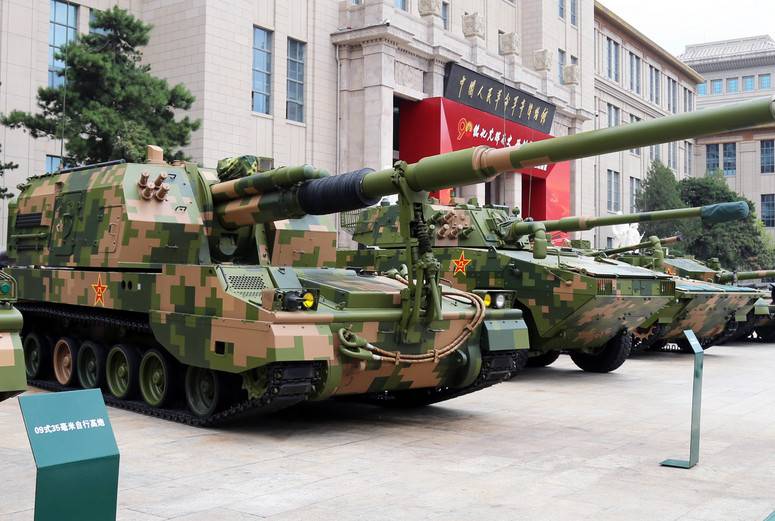
155 mm self-propelled howitzer Type 05
The Chinese self-propelled artillery unit is equipped with a 155-mm L52 howitzer, with a barrel length of 52 caliber. The firing range of an active rocket reaches 53 km, a conventional high-explosive fragmentation shell can fly 39 km. Laser-guided missiles are capable of hitting targets at ranges of up to 20 km. The gun is equipped with an automatic loader, providing a rate of up to 8 rounds per minute. As an additional weapon used a 12,7-mm machine gun Type 89 mounted in front of the commander's hatch. A machine gun is used to provide self-defense against manpower and to fire at air targets. In addition, smoke grenade launchers are installed on each side of the tower in its front. The Type 05 self-propelled artillery system is equipped with a digital fire control system, has a two-channel sight with a thermal imager and a laser range finder.
The armor of the hull and turret provides protection against rifle caliber bullets and light fragments. Crew - 4 people. The combat weight exceeds 43 tons. Type 05 self-propelled guns with a 1000 hp diesel engine can travel at speeds of up to 65 km / h on a paved road, with a range of 450 kilometers.
The Type 05 self-propelled gun chassis was used to create the Type 09 ZSU armed with two 35-mm anti-aircraft guns. In fact, this is a self-propelled version of the 35 mm towed Type 90 with its own fire control system and radar.
Surveillance radar with an antenna mounted above the tower has a detection range of 15 km. If the enemy uses electronic warfare, it is possible to search for air targets with a passive optoelectronic station with a laser rangefinder. Effective range for firing at air targets is up to 4000 m, reach in height is 3000 m. Rate of fire: 1100 rds / min.
To be continued ...
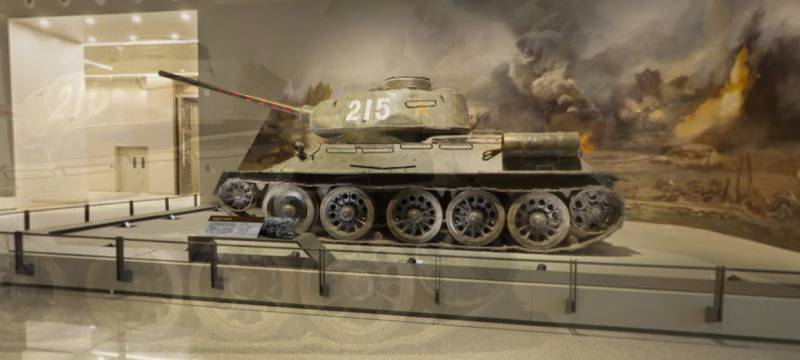
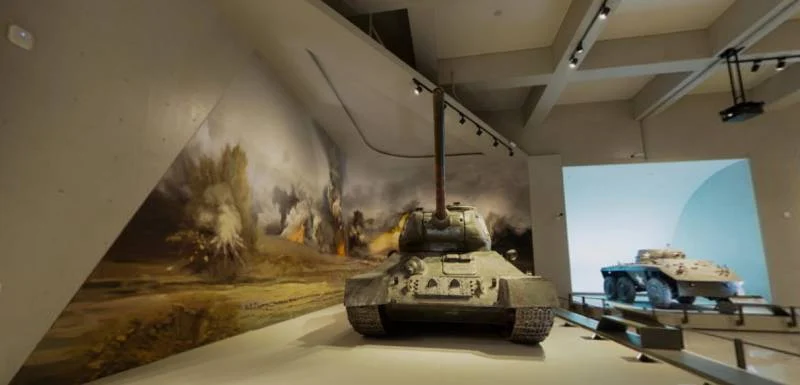
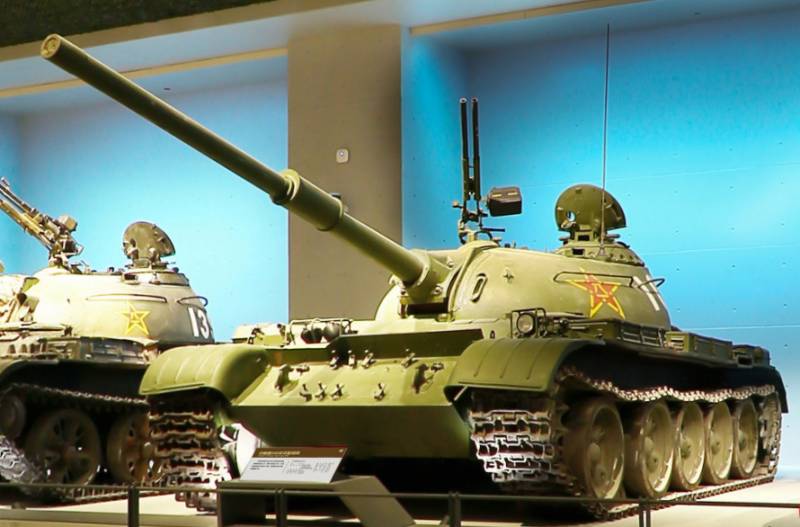
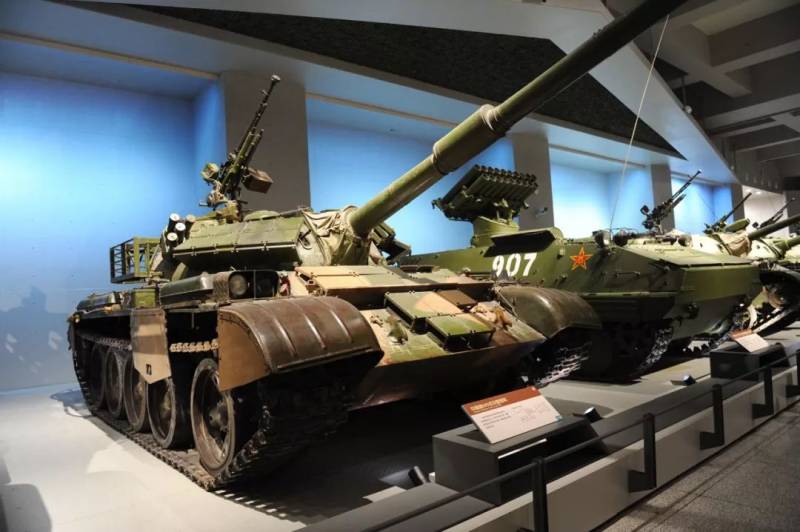
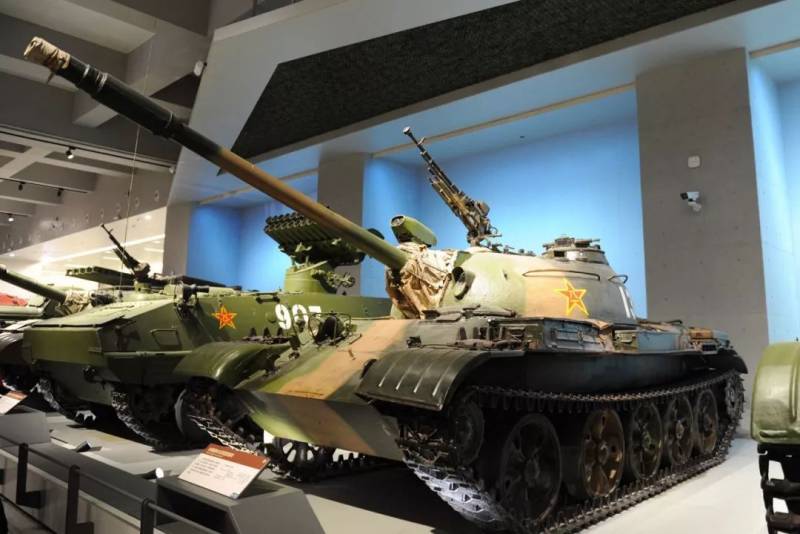
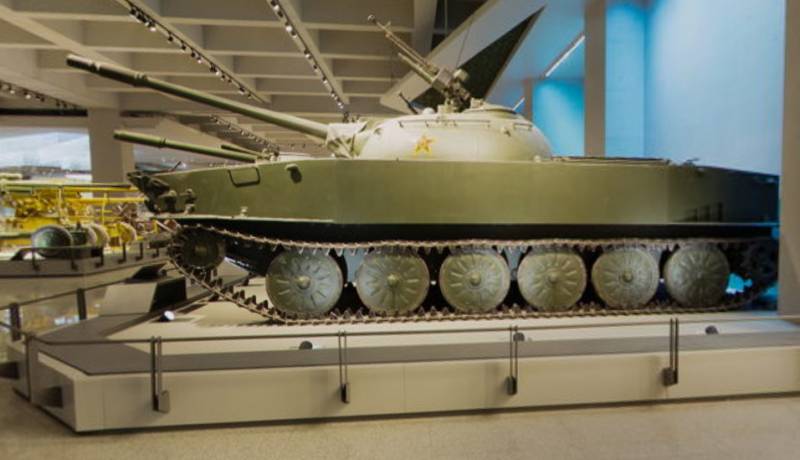
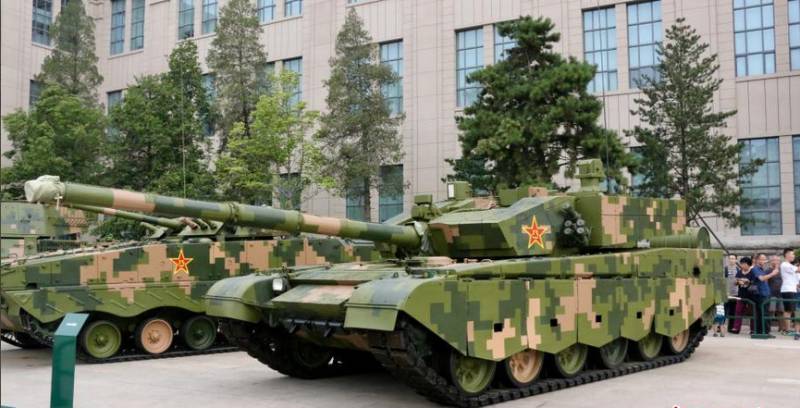
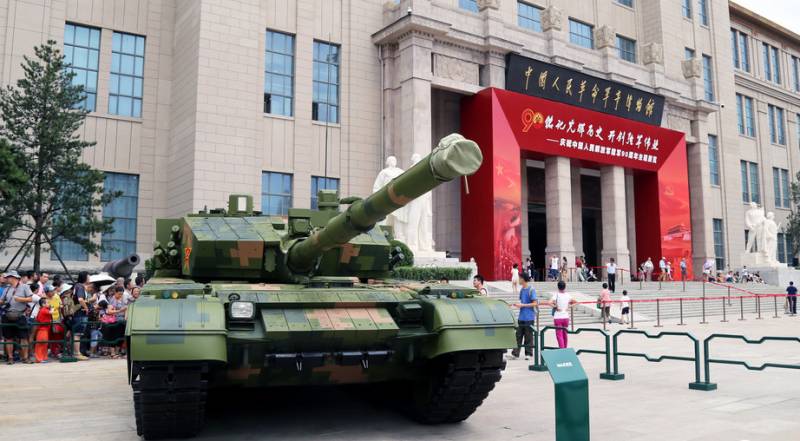
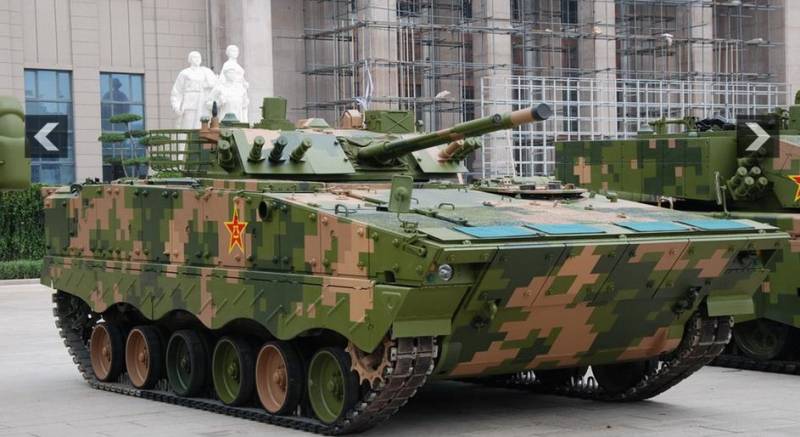
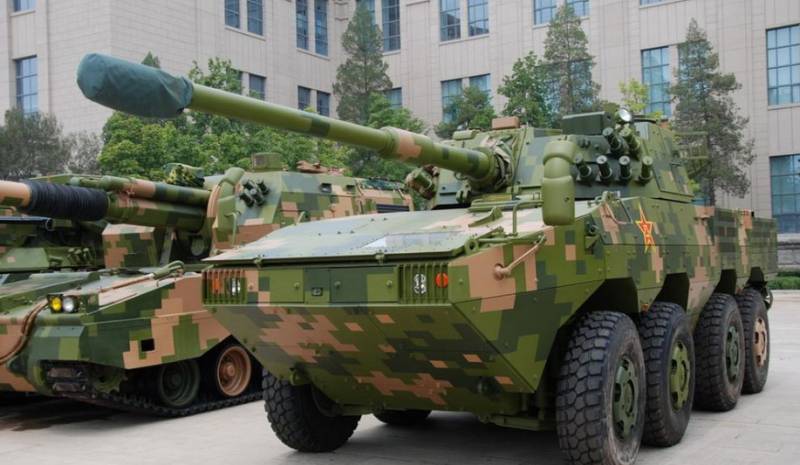
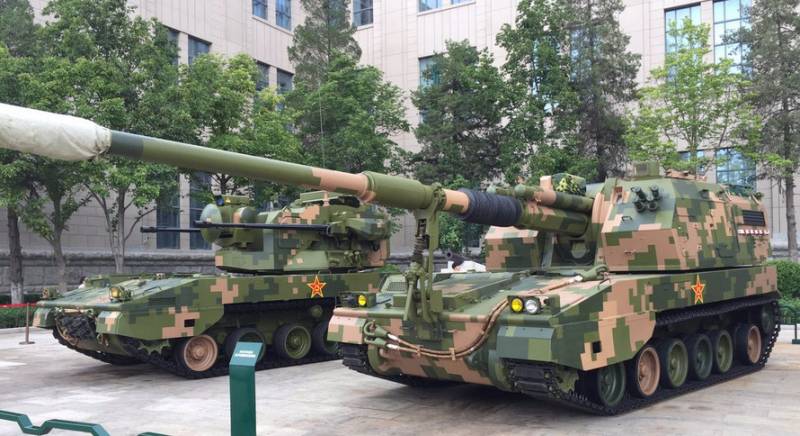
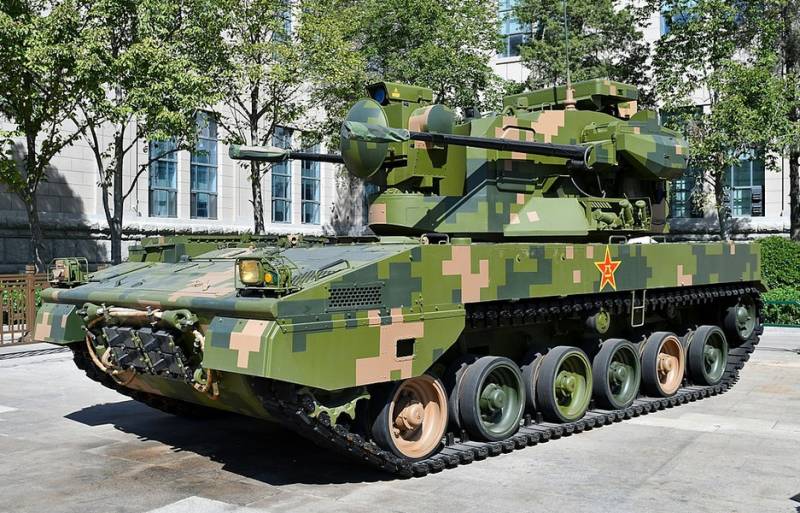
Information